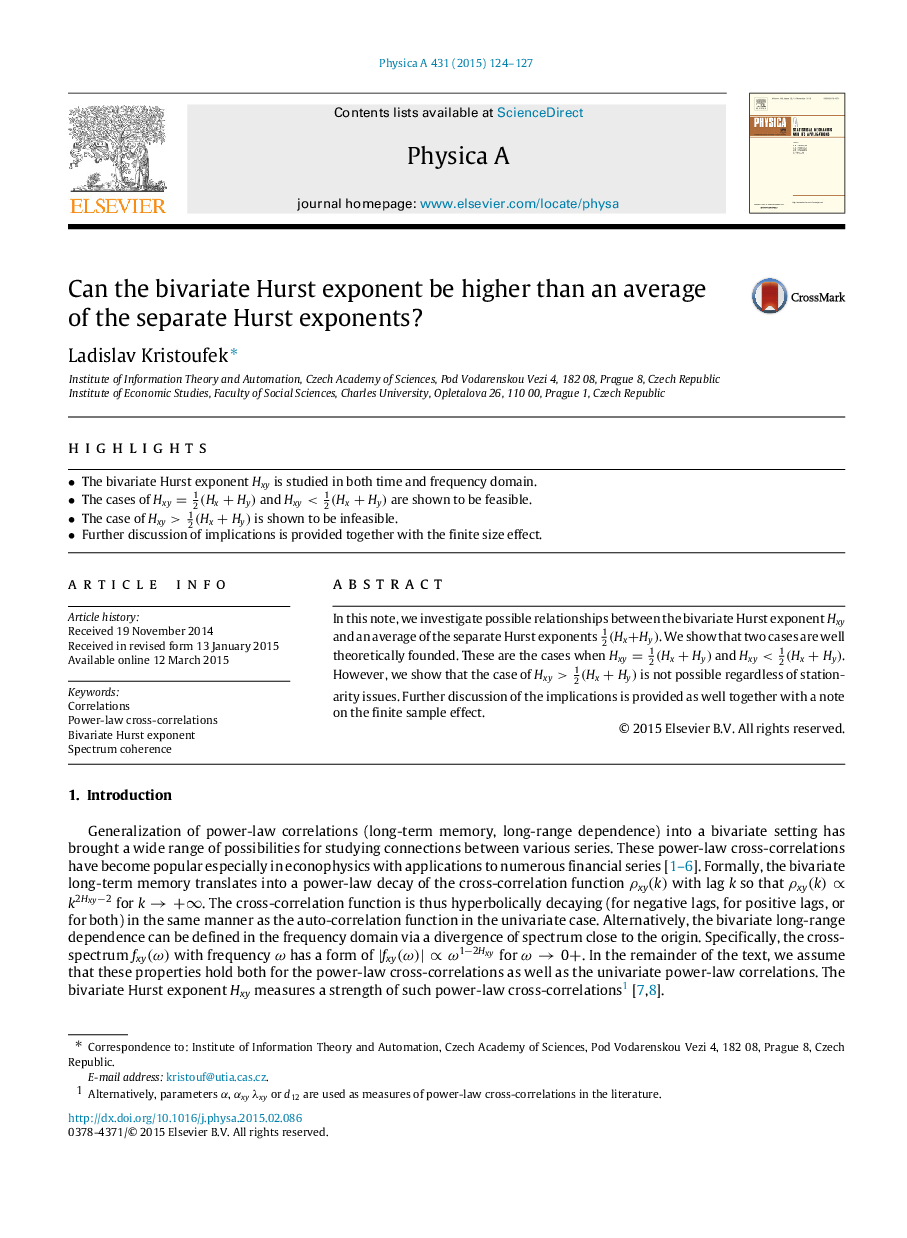| Article ID | Journal | Published Year | Pages | File Type |
|---|---|---|---|---|
| 974320 | Physica A: Statistical Mechanics and its Applications | 2015 | 4 Pages |
•The bivariate Hurst exponent HxyHxy is studied in both time and frequency domain.•The cases of Hxy=12(Hx+Hy) and Hxy<12(Hx+Hy) are shown to be feasible.•The case of Hxy>12(Hx+Hy) is shown to be infeasible.•Further discussion of implications is provided together with the finite size effect.
In this note, we investigate possible relationships between the bivariate Hurst exponent HxyHxy and an average of the separate Hurst exponents 12(Hx+Hy). We show that two cases are well theoretically founded. These are the cases when Hxy=12(Hx+Hy) and Hxy<12(Hx+Hy). However, we show that the case of Hxy>12(Hx+Hy) is not possible regardless of stationarity issues. Further discussion of the implications is provided as well together with a note on the finite sample effect.
